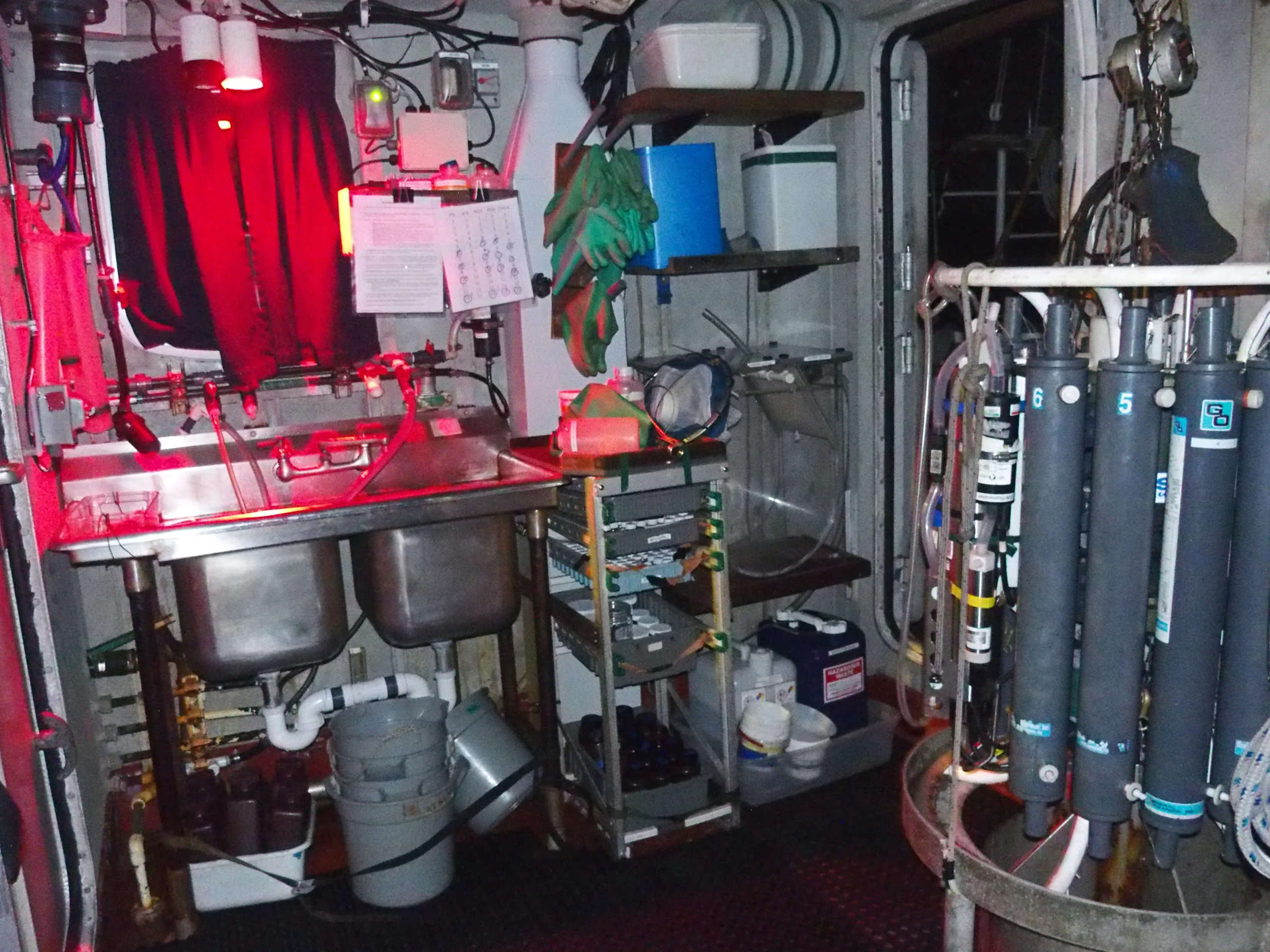Programs Blog
Science is Really Sciencing Now!

Monday, 14 October 2024
Location: 10˚ 14.2’S 178˚ 14.8’E , less than a hundred nautical miles southwest of Tuvalu
Weather: North East wind, Beaufort Force 3, Cumulus clouds
Hello from the Southern Hemisphere! My name is Timothy Chiu, I go to Carleton College in Minnesota, although I am from Long Island, New York. Now how the heck did I get here? Starting in Woods Hole, Massachusetts, I studied oceanography, nautical science, environmental communications, the carbon cycle, and marine environmental history from August 26th till October 4th. This is when I, and our wonderful class, traveled the ~20 hour plane ride to Fiji to meet the Robert C. Seamans, the vessel we’ll be traveling with on our 6-week journey. Now as I write this, we are on day 9 of our voyage, almost to Tuvalu.
Besides some seasickness, the start was amazing, learning the ship, where our bunks are, how to set the sails and tie the ropes. We heard so much about all the equipment we were supposed to use and now we can actually see it! On science deployments, once during the day and once at night, we deploy the hydrocast, which collects water at different depths, the phytoplankton net and meter net, which collects plankton samples from various depths, and the Neuston tow, which collects samples from the surface of the ocean. Science is really sciencing now! Now on a moving boat that primarily uses sails, how do we stop the boat? We jibe! This maneuver positions the sails and the rudder to slow the boat down to a crawl, limiting the movement of the boat. This allows the hydrocast to be deployed without trouble.
We use very fine mesh nets to collect what we want, plankton, and leave what we don’t want, water. We also collect plant material, tar, and larger organisms, which we separate after collection. Once we have everything separated like all the plankton, copepods, etc. that we want, then we get a biovolume. Scales don’t work well on boats since everything constantly moves so we use biovolume. This means we take a known volume, 10 ml, add the sample taken, and see how much changed, and mark down this change as our biovolume. We take the biovolume collected and divide that value by the total volume of water, which is found by the time the net was in the water, or the amount of water that passed through the net. This allows the biovolume of the sample divided by the volume of water, to find the density of organisms—in this case, plankton per unit of water.
Now after all this work, why does this matter? Knowing the density of plankton can tell us about the productivity per unit of water. Most of the ocean is made up of invertebrates, simplifying the food chain, with most of it being phytoplankton being eaten by zooplankton. Measuring density of phytoplankton or zooplankton per unit of water can tell us how many nutrients or other invertebrates are present in the water. This relationship makes up a large part of the ocean, and learning more about it can give a piece of the puzzle to the marine environment.
I hope everyone is doing great and having a wonderful fall! It is really hot here with a nice warm 90˚F. I want to shout out to my family and hope they are doing well, even if I’m not there right now! I also want to shout out all the way to Carleton college to all my friends waiting, especially Eli waiting so patiently for me to return! Love you! I guess that’s all, hope everything is going well, and we’ll be back before you know it!
Recent Posts from the Ships
- Ocean Classroom 2024-A collaborative high school program with Proctor Academy
- Collaborations and Long-term Commitments: SEA’s Caribbean Reef Program Sets a Course for Coastal Programs that Compliment Shipboard Experiences.
- Sea Education Association students prepare for life underway using state of the art nautical simulation from Wartsila Corporation.
- SEA Writer 2022, Magazines From the Summer SEA Quest Students
- Technology@SEA: Upgrades Allow Insight into Ocean Depths
Programs
- Gap Year
- Ocean Exploration
- High School
- Science at SEA
- SEA Expedition
- SEAScape
- Pre-College
- Proctor Ocean Classroom
- Protecting the Phoenix Islands
- SPICE
- Stanford@SEA
- Undergraduate
- Climate and Society
- Climate Change and Coastal Resilience
- Coral Reef Conservation
- Marine Biodiversity and Conservation
- MBL
- Ocean Exploration: Plastics
- Ocean Policy: Marine Protected Areas
- Oceans and Climate
- Pacific Reef Expedition
- The Global Ocean: Hawai'i
- The Global Ocean: New Zealand